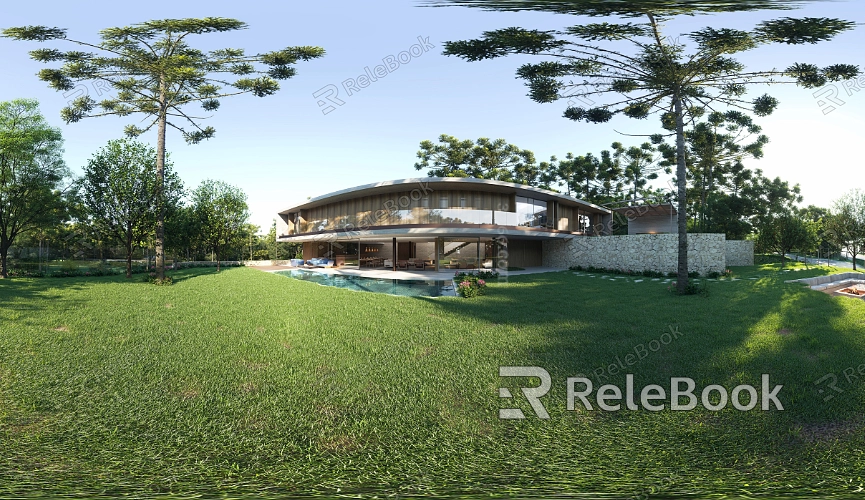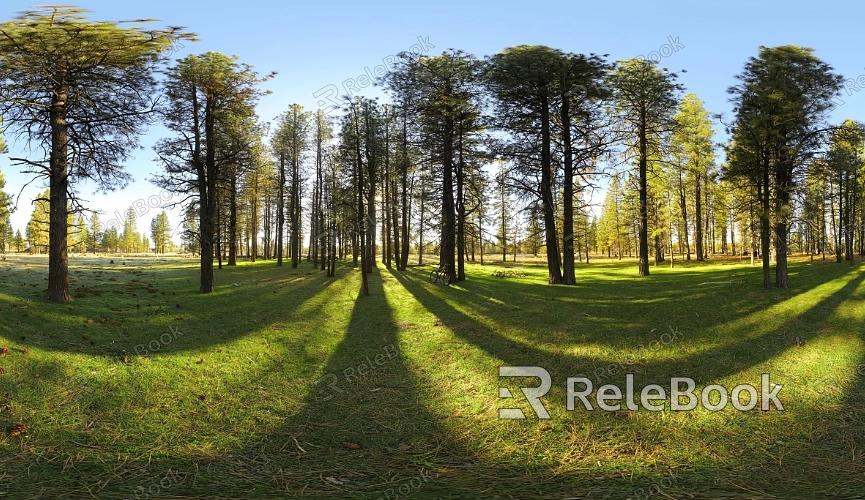How to Apply HDR Forest Textures in 3ds Max
In fields like architectural visualization, film production, or game development, HDR forest textures capture real-world lighting and shadows to create more lifelike effects in 3D scenes. This article will explore how to effectively apply HDR forest textures in 3ds Max and provide key steps and techniques to enhance your design outcomes.

1. Choosing the Right HDR Image
To create a realistic forest scene, selecting the appropriate HDR image is the first crucial step.
Resolution: For large-scale scenes or projects that demand high detail, choosing a high-resolution HDR image is essential. Higher resolutions capture more lighting details, ensuring smooth transitions between near and distant elements.
Exposure Range: Forest scenes often feature areas with both heavy shadows and direct sunlight, making a wide exposure range necessary. This allows for natural transitions from dark to light areas.
Scene Relevance: Make sure the HDR image matches the environment you’re trying to create. For example, selecting the appropriate season or weather conditions can significantly enhance realism. Opting for an HDR image that reflects a similar natural setting will better simulate real-world lighting and color variations.
2. Setting Up Environment Lighting
HDR textures are often used to simulate natural lighting in 3D environments, mimicking real-world light behavior.
Directional Lighting: In forest environments, light typically filters in from above the tree canopy. Adjust the direction of the HDR lighting in 3ds Max to match the composition of your scene. This helps generate realistic shadows and natural light distribution.
Brightness Adjustment: The brightness of the HDR image should be fine-tuned to fit the needs of the scene. Too much brightness can result in overexposure, while too little can make the scene appear dull. Finding the right balance is crucial to ensure soft, layered lighting.
Tone Adjustment: Depending on the time of day or the desired atmosphere, you may want to adjust the tone of the HDR image. For instance, a morning forest often has a golden hue, while evening scenes may have softer orange lighting. Subtle tone shifts can better convey the mood of the environment.
3. Creating Reflection and Refraction Effects
Another important use of HDR images is to create realistic reflections and refractions. Using an HDR image for reflections can make objects in the scene react more naturally to surrounding light.
Leaf Reflection: Leveraging the lighting information in the HDR image, leaves in the scene can reflect light more realistically. For example, sunlight filtering through the leaves can produce subtle reflections that enhance the realism.
Water Refraction: If your scene includes water, applying the HDR texture can generate more lifelike water refraction effects. The reflective and refractive qualities of the water can benefit from the natural lighting captured in the HDR image.

4. Enhancing Detail with Bump Maps
To boost realism in a forest scene, you can use bump maps alongside HDR images to enhance surface details. Bump maps help simulate texture depth on surfaces like tree trunks, rocks, and ground, making light interaction with these objects appear more natural.
Tree Bark and Leaf Detail: With bump maps, tree bark will appear rougher, adding more realism to the scene. The fine textures of leaves will also be better represented through changing light and shadow.
Ground Detail: In forest scenes, the ground is often covered in leaves, grass, or rocks. Bump maps can enhance the texture of these elements, making them more vivid and lifelike.
5. Optimizing Performance by Adjusting Sampling Settings
Although HDR images can greatly improve the realism of a scene, they can also be taxing on system performance. To ensure smooth workflows, you can optimize rendering performance by adjusting sampling settings.
Reducing Noise: Noise during rendering is often caused by unnecessarily high sample rates. By lowering the sample rate, you can reduce noise while speeding up the rendering process.
Ray Tracing Optimization: If you're using a ray-tracing engine, adjusting the reflection depth and trace count can reduce rendering times. Setting appropriate values will ensure detail is preserved while enhancing efficiency.
6. Post-Processing for Enhanced Effects
After completing the initial rendering in 3ds Max, some post-processing steps can elevate the final output.
Color Correction: Post-processing can be used to adjust contrast, saturation, and tone to make the scene more dynamic and vivid.
Light Enhancement: Post-processing tools like Photoshop or After Effects can be used to add light effects such as direct sunlight or lens flares, giving the scene more depth and realism.
Depth of Field: To mimic real-world camera effects, adding depth of field can help blur foreground or background elements, enhancing the focus on certain areas and creating a more natural look.
7. Implementing HDR in Other Software
Although this article focuses on 3ds Max, HDR images are used in different ways across various software programs. In Blender, HDR images are typically added via the environment map node, while in Cinema 4D, they are often applied using a Sky Object to improve lighting and reflections.
Blender: In the node editor, HDR images can be used as environment lighting, and the light effects can be controlled by adjusting the nodes.
Cinema 4D: HDR files applied to the Sky Object can significantly enhance the natural lighting of a scene.
By following the steps outlined in this article, 3D designers can master the use of HDR forest textures in 3ds Max, enhancing the realism and visual impact of their scenes. If you're searching for high-quality HDR images, 3D textures, or models, Relebook offers a wide selection of resources to help you achieve outstanding visual effects in your projects.

